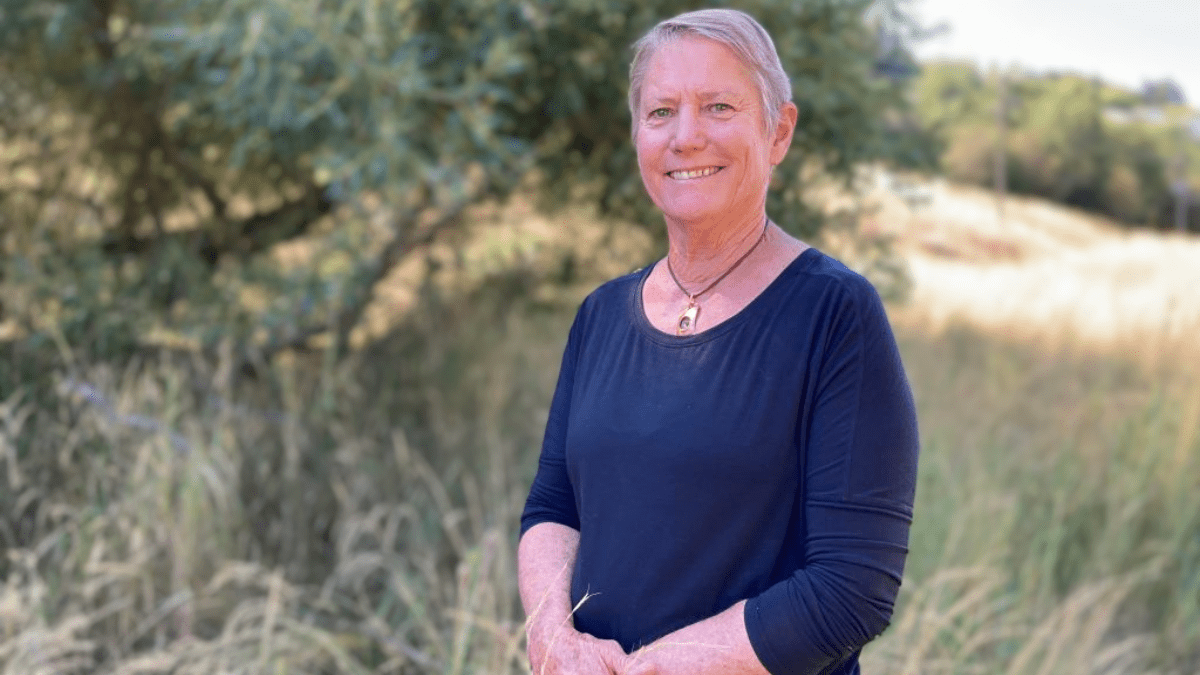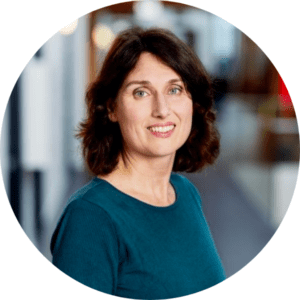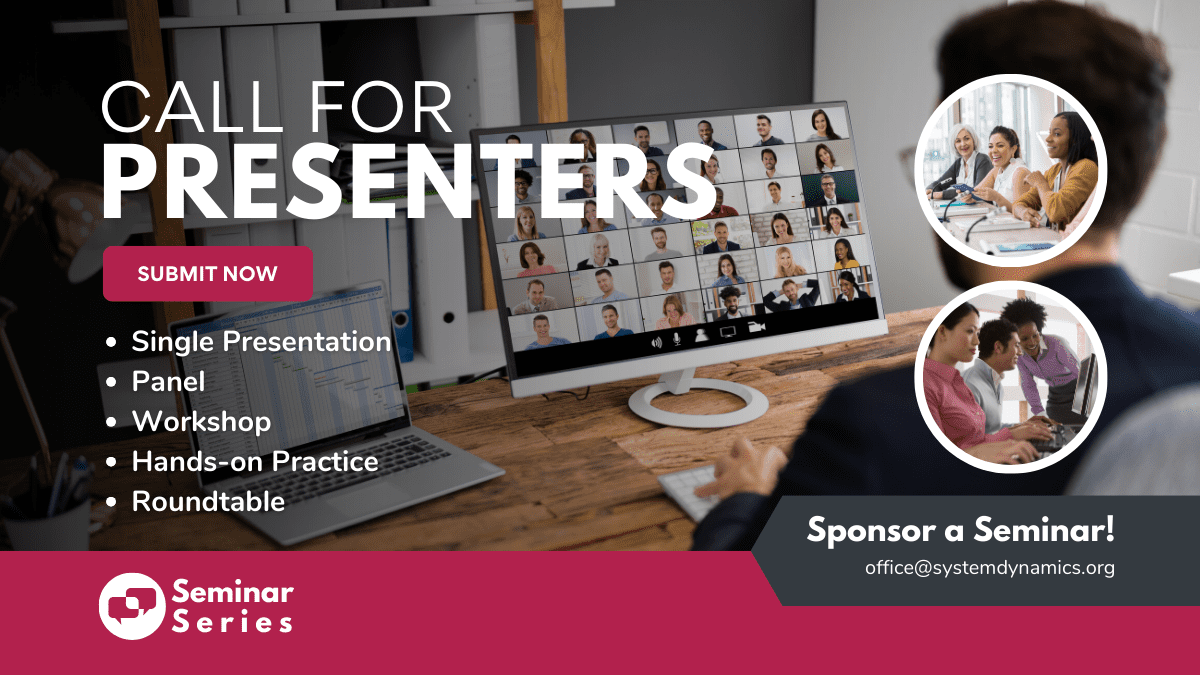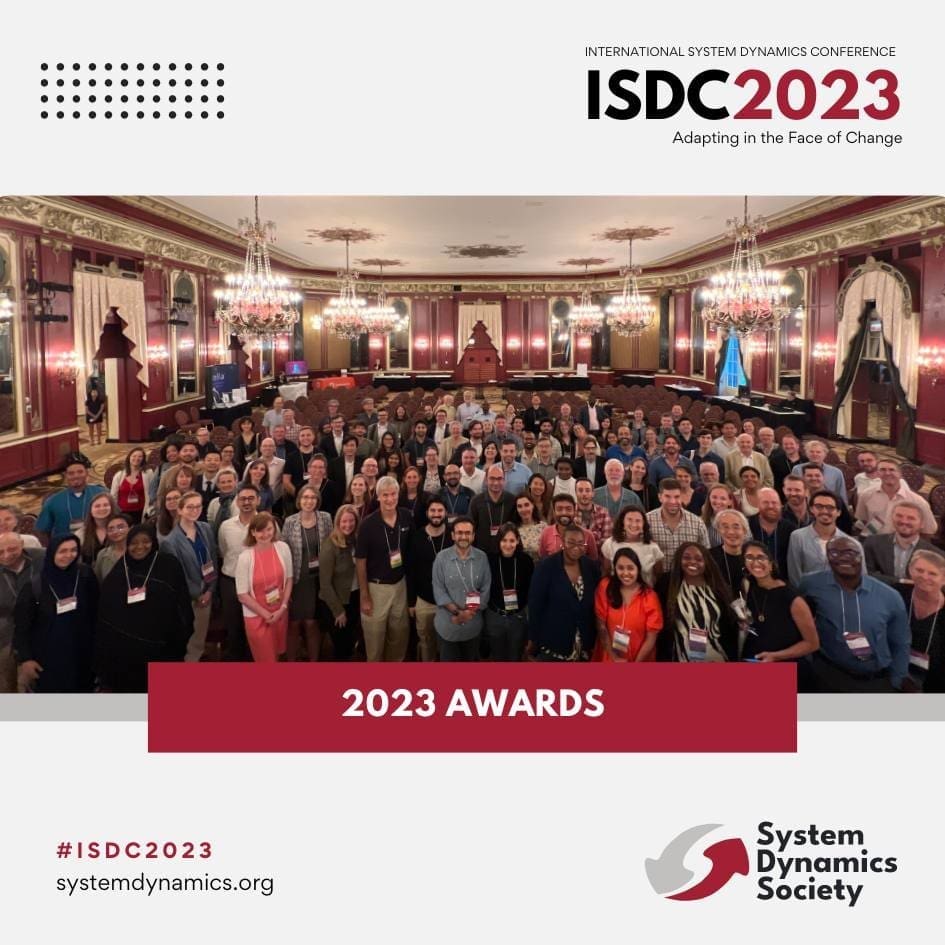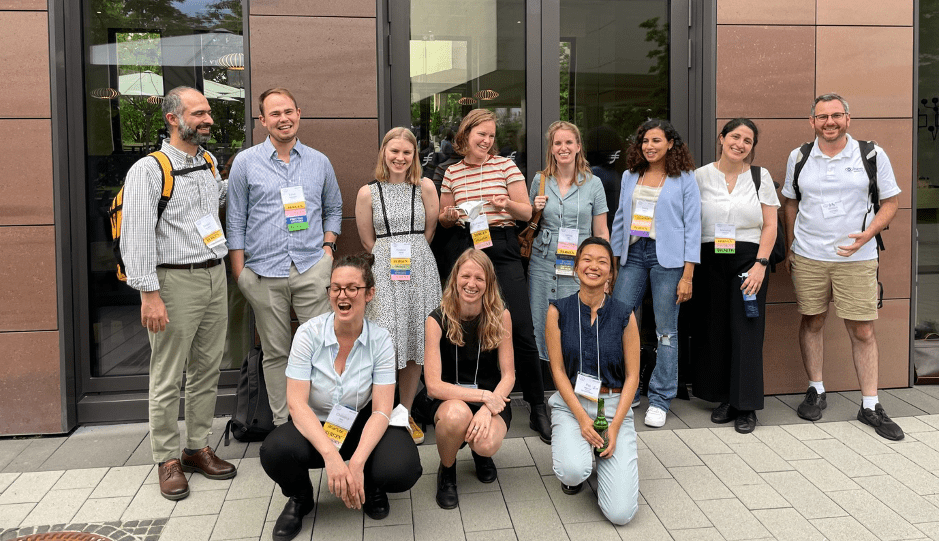How Did En-ROADS Get 755,000 users? Lessons on Modeling, Interface Design, and Facilitation
How Did En-ROADS Get 755,000 users? Lessons on Modeling, Interface Design, and Facilitation
Achieving widespread engagement is a significant challenge with a System Dynamics model. Yet, En-ROADS, the climate solutions simulator co-developed by Climate Interactive and MIT Sloan, has captivated hundreds of thousands of users globally. In this webinar led by Andrew Jones, John Sterman, and Florian Kapmeier, the team shared how their commitment to System Dynamics modeling principles, innovative interface design, and thoughtful facilitation created a global movement. The lessons learned are relevant for all System Dynamics modelers seeking to make a greater impact in their fields.
1. Modeling: Build Trust and Ensure Accuracy
“You have to have a rigorous, evidence-based model that is fully documented and tested every which way.” John Sterman
En-ROADS’ impact is built on a robust modeling foundation that adheres to rigorous standards of transparency and continuous testing. John Sterman underscores the importance of rigorous validation: “You have to have a rigorous, evidence-based model that is fully documented and tested every which way,” he states, highlighting the necessity for clear, accessible documentation that allows users to understand and trust the model’s operations.
The En-ROADS team enhances model reliability by calibrating past model behavior against historical data (by, e.g. Lazard, the IEA, etc.) and comparing future model behavior against the behavior of climate models used by the Intergovernmental Panel on Climate Change (IPCC), identifying discrepancies not only to prove correctness, but also to pinpoint areas needing improvement. Andrew Jones elaborates on this process: “We compare the model against historical data to understand where the discrepancies are and how we can improve. It’s not about proving the model’s correctness but about identifying areas for growth and improvement.”
For System Dynamics modelers looking to build confidence in the model, these practices are essential. Providing full transparency through comprehensive documentation and continuously validating models against industry benchmarks are crucial steps in establishing credibility. By adhering to these principles, modelers can ensure their models are technically robust and able to support decision-making.
2. Interface Design: Guide Users to Key Insights
“We designed the interface to lead a user to discover our modelers’ top insights without support.” Andrew Jones
En-ROADS’ interface is designed to ensure users reach key insights intuitively. Andrew emphasized the goal: “We designed the interface to lead a user to discover our modelers’ top insights without support.” The interface offers both a beginner mode for quick understanding and an advanced mode for users with more technical skills, providing detailed charts and additional assumptions. Dynamic visuals and animations transform static data into a narrative, making complex concepts accessible and engaging.
Within a few minutes exploring the En-ROADS interface, new users quickly grasp three critical insights:
- “It’s still possible” – to bend the emissions curve and reduce average temperature increase.
- “There’s no silver bullet”, highlighting that no single solution can solve the climate crisis.
- “Many solutions together”, emphasizing that combining multiple climate solutions is necessary to mitigate the climate crisis.
An interface designed around key insights helps users understand complexity. The ease of engaging with a new innovation—trialability—is crucial for initial adoption and fostering word of mouth. Yet, negative experiences can lead to adverse feedback, potentially stifling the adoption and diffusion of the model. Sterman emphasized: “if people try something and have a bad experience, they will generate unfavorable word of mouth that can squelch the adoption and diffusion of your model.”
John Sterman emphasizes the consequences of neglecting interface quality: “Suppose you have the world’s greatest model, but a terrible interface. Nobody learns anything, nothing will change, and you and everyone have wasted precious time and resources. That’s a failure mode.” But he warns, “The opposite, though, is far more dangerous: a great interface with an underlying model that lacks integrity and hasn’t been carefully tested means you’re helping people learn things that are wrong and possibly downright harmful far more effectively than ever before.”
By focusing on intuitive design and rigorous validation, En-ROADS ensures that the simulation is insightful and reliable for understanding possible climate solutions. This strategy serves as a reference for those aiming at making their models both informative and influential. As a System Dynamics Modeler, which 2-3 key takeaways would you like users to learn from your model?
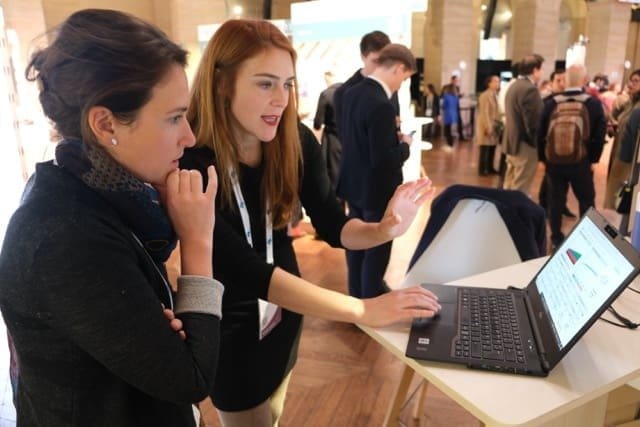
3. Facilitation: Create a Safe Space for Learning
“Make sure that you create a safe room where participants can share and challenge their mental models to allow them to engage deeply and learn together.” – Florian Kapmeier
Facilitation is critical to En-ROADS’ global impact. Through experiences like the interactive En-ROADS Climate Workshop and the roleplaying game Climate Action Simulation Game, Climate Interactive effectively conveys the insights of the model by fostering environments that encourage deep learning and reflection. Florian Kapmeier emphasized the importance of these settings: “Make sure that you create a safe room where participants can share and challenge their mental models to allow them to engage deeply and learn together.” This approach allows participants to openly test their assumptions and understand the underlying dynamics of climate change.
Florian, referred to Andrew’s Top 10 Tips to Engage People with a System Dynamics Model, highlighting one key aspect: By asking participants to mentally the likely impact of a climate solution on the temperature before running a scenario in En-ROADS, participants reveal their existing mental models and learn more effectively by comparing their understanding with model results. “Learning happens when the theory of thinking is laid out and people have to make a choice.”
The commitment to creating a secure and open space for dialogue is foundational to the success of the engagements with En-ROADS. This facilitation strategy enhances the participants’ ability to understand complex concepts, and encourages them to apply these insights in practical and impactful ways. By ensuring that each session serves as a safe space for exploration and challenge, Climate Interactive fosters an environment where transformative learning and genuine understanding can occur.
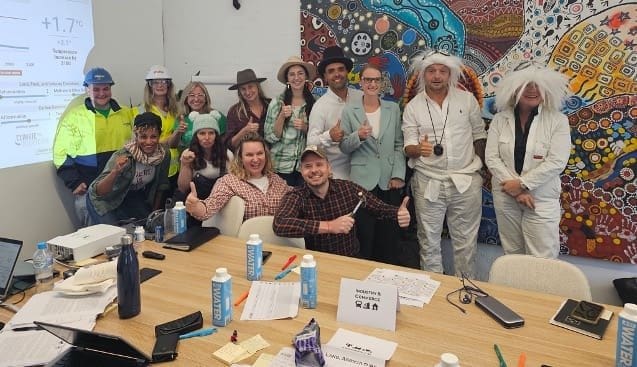
Climate Action Simulation for IKEA, Australia
Community & Policy Engagement
Community building has been fundamental to extend En-ROADS’ reach globally. Thousands have completed the Mastering En-ROADS training program, which empowers facilitators to engage diverse audiences. The En-ROADS Climate Ambassador program further nurtures hundreds of facilitators who provide En-ROADS Workshops and Climate Action Simulations worldwide, ensuring a unified network of like-minded advocates. This well-structured support system ensures that these facilitators are equipped to spread their knowledge effectively, fostering a collaborative and impactful community.
In addition to training and support, Climate Interactive’s team emphasized the importance of engaging with policy makers, adapting communication to meet where they are in terms of climate change understanding. Presenting complex model data in an accessible manner is crucial for meaningful engagement. This strategy ensures that decision-makers receive information and are equipped to act on it.
The Power of System Dynamics
“System Dynamics is the most powerful way to engage other people in ways to improve system performance.” – John Sterman
The success of En-ROADS hinges on a commitment to the core principles of System Dynamics, paired with innovative interface design and effective facilitation strategies. This approach has educated a global audience on climate solutions and empowered them to act. John Sterman, reflecting on the broader implications, asserts, “System dynamics is the most powerful way to engage other people in ways to improve system performance”, underscoring the potential of System Dynamics to facilitate meaningful discussions and drive change across various domains.
Sterman reminded the audience that the discipline’s strength lies in its ability to convey complexity in a way that decision-makers can understand and act upon: “System Dynamics modelers need to invite people into the conversation, to join the collective effort and improve system performance together.” This collaborative spirit is reflected in the global network of facilitators, policymakers, and climate advocates brought together by En-ROADS.
As System Dynamics modelers, the challenge is to not only build robust models but also to design engaging interfaces, facilitate participatory workshops, and nurture a community of like-minded advocates. By doing so, modelers can extend their influence beyond their field and create meaningful change in the world.
Watch the recording below
Recent Posts
Society Governance Updates
New System Dynamics Society leadership
Call for Presenters: Seminar Series
Share your insights in the System Dynamics Society Seminar Series. Submit your proposal and join a global community of experts
Honoring Excellence: A Glimpse into the Awards of the International System Dynamics Conference
Dive into the prestigious awards and honorable mentions of the International System Dynamics Conference, celebrating trailblazers and emerging talents in the field
Upcoming Events
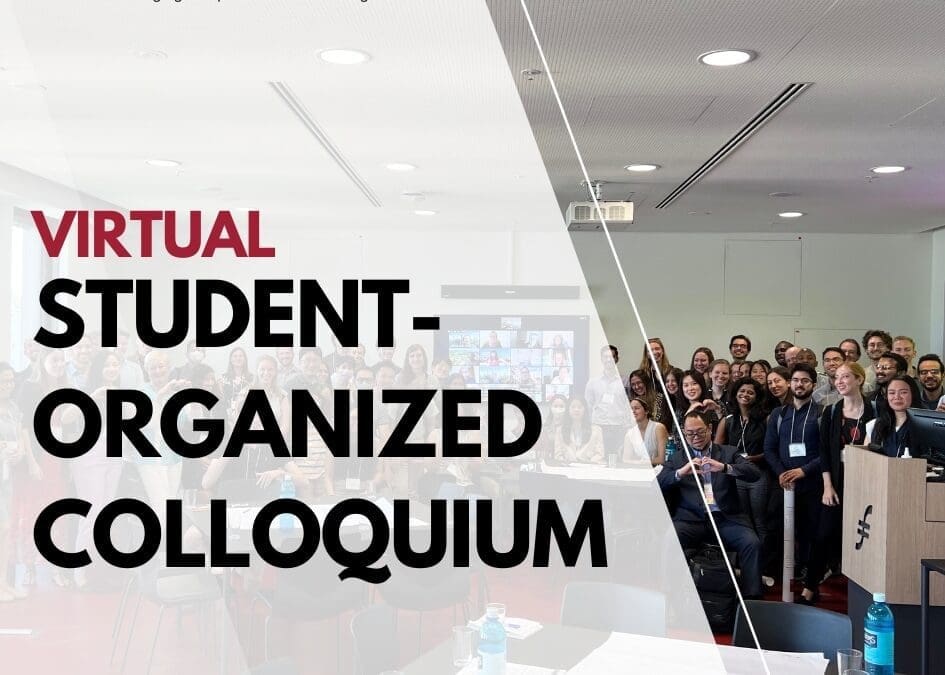
VIRTUAL | Student-Organized Colloquium 2024
Open to all! Bringing together students and practitioners from different industries to share ideas, and develop modeling skills
Recent Business cases
System Dynamics Helps Evaluate Anticipatory Action on Cholera Outbreaks
Humanitarian agencies encourage anticipatory action in disaster response to cholera outbreaks in the Democratic Republic of Congo.
Management Design for Planted Forests in Japan Using System Dynamics
Hanno City in Saitama Prefecture used a system dynamics model to enable detailed analysis of labor requirements and changes in forest conditions.
Solving Bottlenecks in Dairy Production Facilities with System Dynamics
FriedslandCampina employed system dynamics to strategically enhance production efficiency in the midst of factory merging.
Join us
Society Governance Updates
Welcome, Allyson!
New President
Allyson Beall King joined the Policy Council as our 2024 President. Her primary role is as director of the Washington State University School of the Environment, which focuses on regional ecologies and our changing planet. Her expertise in Systems Dynamics spans various fields, including environmental science and natural resource management. Her work involves collaboration across disciplines to address complex environmental challenges. A select list of her publications can be found in the Society bibliography.
She looks forward to working with the Policy Council and the Society office to bring more ideas to fruition. Reach out to her with thoughts on how we might better achieve our goals of growth of the field.
A heartfelt thank you
We thank Brad Morrison (Brandeis University) for his dedicated leadership throughout 2023.
His contributions as President have been invaluable in advancing the field of System Dynamics and strengthening our community.
As Brad transitions from his role, we look forward to his continued involvement and guidance within our community as Past President.
New VPs
Memberships
As a full-fledged professor in Action Research at Radboud University, Inge Bleijenbergh has a deep-rooted passion for fostering equality, diversity, and inclusion. She employs participatory approaches such as focus groups and group model building, engaging organizational members to unravel and tackle complex issues.
She’s genuinely excited about the journey ahead. If you have ideas to broaden membership or enhance its benefits, she would be more than happy to hear from you.
Publications
Bob Eberlein is a founding member of the System Dynamics Society. His service in various roles since 1984, most recently as VP Epresence, has been instrumental in shaping the organization.
His notable contributions include the development of System Dynamics modeling software like Vensim and Stella Architect. Currently, he channels his expertise as a consultant at isee systems.
In this new role, he hopes to expand the visibility of practical applications of System Dynamics. If you have thoughts to share on Society publications, please do not hesitate to reach out.
Policy Council Members
Meet Cleotilde (Coty) Gonzalez, a dedicated Research Professor at Carnegie Mellon University. Her work shines a light on the fascinating field of human decision making. In the Dynamic Decision Making Laboratory, which she directs, models are employed to enhance training and refine decision-making skills.
Hazhir Rahmandad is a professor at the MIT Sloan School of Management. Hi research focuses on organizational dynamics and public health with an emphasis on expanding the dynamic modeling toolbox through parameter estimation and validation methods.
He looks forward to engaging with the policy council as the ISDC2024 Program Chair and in an advisory capacity.
Recent Posts
Society Governance Updates
New System Dynamics Society leadership
Call for Presenters: Seminar Series
Share your insights in the System Dynamics Society Seminar Series. Submit your proposal and join a global community of experts
Honoring Excellence: A Glimpse into the Awards of the International System Dynamics Conference
Dive into the prestigious awards and honorable mentions of the International System Dynamics Conference, celebrating trailblazers and emerging talents in the field
Upcoming Events
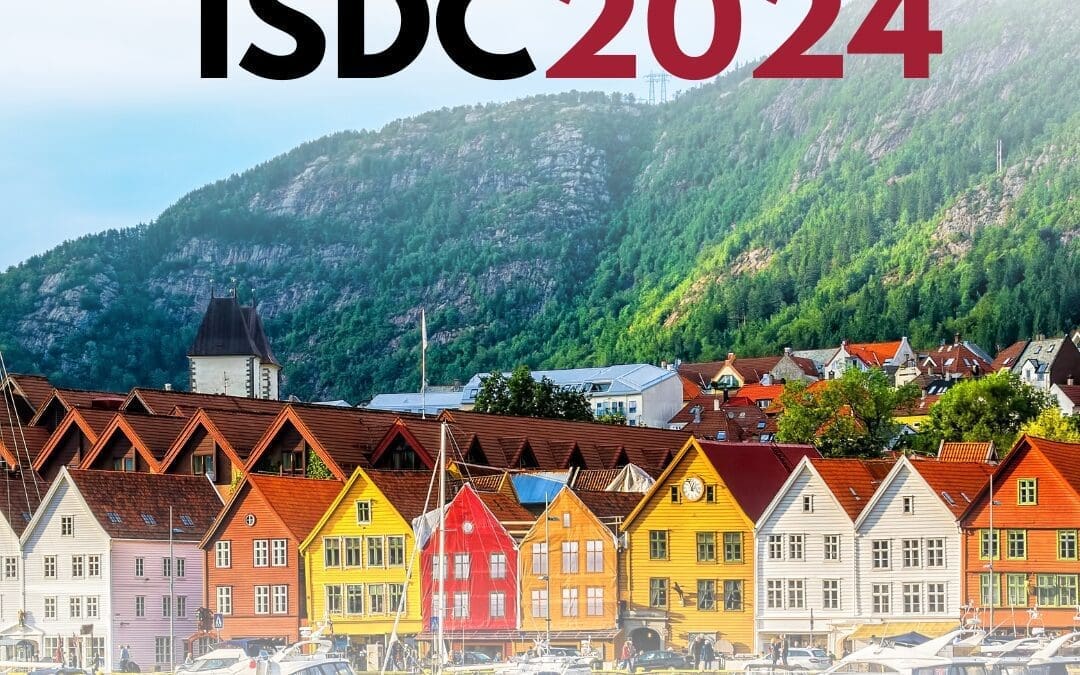
2024 International System Dynamics Conference
The International System Dynamics Conference is coming to Bergen! Save the date: August 4-8, 2024. We hope to see you there! #ISDC2024
Recent Business cases
System Dynamics Helps Evaluate Anticipatory Action on Cholera Outbreaks
Humanitarian agencies encourage anticipatory action in disaster response to cholera outbreaks in the Democratic Republic of Congo.
Management Design for Planted Forests in Japan Using System Dynamics
Hanno City in Saitama Prefecture used a system dynamics model to enable detailed analysis of labor requirements and changes in forest conditions.
Solving Bottlenecks in Dairy Production Facilities with System Dynamics
FriedslandCampina employed system dynamics to strategically enhance production efficiency in the midst of factory merging.
Join us
Call for Presenters: Seminar Series
We at the System Dynamics Society are continually seeking vibrant and knowledgeable presenters for our ongoing Seminar Series. As we unfold the calendar, there’s always a place for more insights, experiences, and expertise to enrich our global community. The floor is open for ideas throughout the year, keeping our series diverse and timely. These seminars are our most popular events and range from 60 (at roundtables) to 560 attendees (at free hands-on seminars).
Present a Seminar
We are seeking dynamic and engaging speakers to contribute to our diverse lineup of events, which cover a wide range of topics including modeling, decision-making, sustainability, and public policy. Our seminars are designed to be accessible to both beginners and experienced audiences and provide a valuable forum for learning, sharing, and collaborating on the application of System Dynamics to real-world challenges.
Reasons to Present
- Showcase Your Work: Present your research, run a workshop, or lead a hands-on practice session to a global audience.
- Network and Connect: Engage with academics, practitioners, and students from around the world.
- Strengthen the Field: Contribute to the promotion of systems thinking and System Dynamics, and help develop skills to effectively apply these approaches.
How to Submit Your Proposal
Submit your seminar proposal anytime by completing the form below. Provide details about your proposed topic, format, and availability. Remember, all seminars and recordings are free for members, and the general public is welcome to join for a nominal fee.
Types of Seminars You Can Lead
Learn more about our type of Seminars and submit your proposal:
Single Presentation: for practitioners and academics who want to showcase their work to our community. We’re looking for high-quality work, especially work with positive outcomes applying System Dynamics and/or systems thinking for better decision-making. For example, Andrew Jones shared his valuable Top 10 Tips to Engage People With a System Dynamics Model with over 250 participants.
Panel: formed by two or more presenters about a single topic aiming at a discussion and exchange of ideas. This format is great for demonstrating the adaptability of System Dynamics in solving complex problems. The System Dynamics for Climate Change Mitigation panel gathered together presenters with different perspectives from Climate Interactive, Millenium Institute, and The Climate Initiative at Umass Lowell.
Workshop: help our community to develop specific skills and engage in intensive discussion on a particular subject. At the beginning of 2021, we had a workshop on Group Model Building Online where a group of researchers shared their experience and materials.
Hands-on Practice: guide our audience on a step-by-step practice. Help them develop specific skills such as basics of System Dynamics modeling, Causal Loop Diagramming, use of software features, and much more. With over 560 attendees, the Introduction to Modelling Process seminar allowed participants to take their first steps in System Dynamics modeling.
Roundtable: we want to hear the opinions of our members on several topics. The roundtable setting helps us give voice to all attendees and hone our efforts on what’s most important for our community. With the help of facilitators and the Miro platform, we were able to gather opinions on How to Get System Dynamics into University Programs.
Sponsor a Seminar
We are continuously looking for sponsors to make more seminars accessible to everyone. Contact us at office@systemdynamics.org if your organization is interested in sponsoring a seminar. Join us in making the System Dynamics Society Seminar Series a ceaseless source of learning, sharing, and community building!
Submit your ideas using the form below:
Recent Posts
Society Governance Updates
New System Dynamics Society leadership
Call for Presenters: Seminar Series
Share your insights in the System Dynamics Society Seminar Series. Submit your proposal and join a global community of experts
Honoring Excellence: A Glimpse into the Awards of the International System Dynamics Conference
Dive into the prestigious awards and honorable mentions of the International System Dynamics Conference, celebrating trailblazers and emerging talents in the field
Upcoming Events

2024 International System Dynamics Conference
The International System Dynamics Conference is coming to Bergen! Save the date: August 4-8, 2024. We hope to see you there! #ISDC2024
Recent Business cases
System Dynamics Helps Evaluate Anticipatory Action on Cholera Outbreaks
Humanitarian agencies encourage anticipatory action in disaster response to cholera outbreaks in the Democratic Republic of Congo.
Management Design for Planted Forests in Japan Using System Dynamics
Hanno City in Saitama Prefecture used a system dynamics model to enable detailed analysis of labor requirements and changes in forest conditions.
Solving Bottlenecks in Dairy Production Facilities with System Dynamics
FriedslandCampina employed system dynamics to strategically enhance production efficiency in the midst of factory merging.
Join us
Honoring Excellence: A Glimpse into the Awards of the International System Dynamics Conference
Honoring Excellence: A Glimpse into the Awards of the International System Dynamics Conference
The International System Dynamics Conference brings together experts, practitioners, and students to exchange ideas, showcase real-world applications, and celebrate outstanding achievements in the field. Every year, the System Dynamics Society recognizes exceptional contributions through a range of awards. In this article, we shed light on the various awards presented during the conference and the brilliant minds that earned these honors in the recent edition.
System Dynamics Applications Award
This award is presented for the best real-world application of System Dynamics. ReThink Health’s System Dynamics model has made notable strides in the health sector, being integrated by over 20 universities and 52 federal agencies. Over 2000 individuals have connected with its network, formulating long-term, equitable recovery plans based on this approach.
Winners: ReThink Health – Bobby Milstein, Jack Homer, Gary Hirsch, Elliott Fisher, Rebecca Niles, Kris Wile, Chris Soderquist, and John Sterman.

Outstanding Service Award
The Outstanding Service Award recognizes individuals for their exceptional volunteer contributions to the Society over an extended period of time. Rod MacDonald, with his vast 25-year experience in developing simulation models, has been invaluable, especially with his contributions to the Modeling Assistance Workshop and the Short-Term Modeling Assistance program.
Winner: Rod MacDonald (left)

Dana Meadows Award
Named after Dana Meadows, this award celebrates top-tier student work in System Dynamics. Ann Osi and co-author Navid Ghaffarzadegan’s research has clearly demonstrated the excellence the award seeks to honor.
Winner: Ann Osi
Paper: Data-Informed Parameter Estimation in Behavioral Epidemic Models
Abstract: Behavioral epidemic models integrate disease spread and human response. This study found that estimating behavior parameters is less accurate in early pandemic stages. Better estimates come after the pandemic’s first peak and with more behavior data. Traditional SEIR models can be misleading, fitting well initially but erring later on. The research underscores the intricacies of calibrating behavior-disease models.

Early Career Health Paper Award
Aimed at acknowledging extraordinary papers addressing health topics by students or recent graduates. The paper by Samuel Allen, Andrada Tomoaia-Cotisel, Rod MacDonald, and Jason M. Etchegaray was outstanding in this category.
Winners: Samuel Allen and Andrada Tomoaia-Cotisel
Paper: Implementing and Sustaining Healthcare Quality Improvement: A Case Study Examining Feedback Structure and Dynamics
Abstract: Quality improvement (QI) in healthcare goes beyond simple feedback. A case study in a Neonatal Intensive Care Unit from 2015-2019 developed a unit-based approach (UBA) for front-line QI training, leading to improved quality. Mixed methods simulation modeling documented the feedback and context of this intervention. While a simplified feedback structure can explain many situations, sustaining UBA’s effectiveness demands new management and system design innovations.
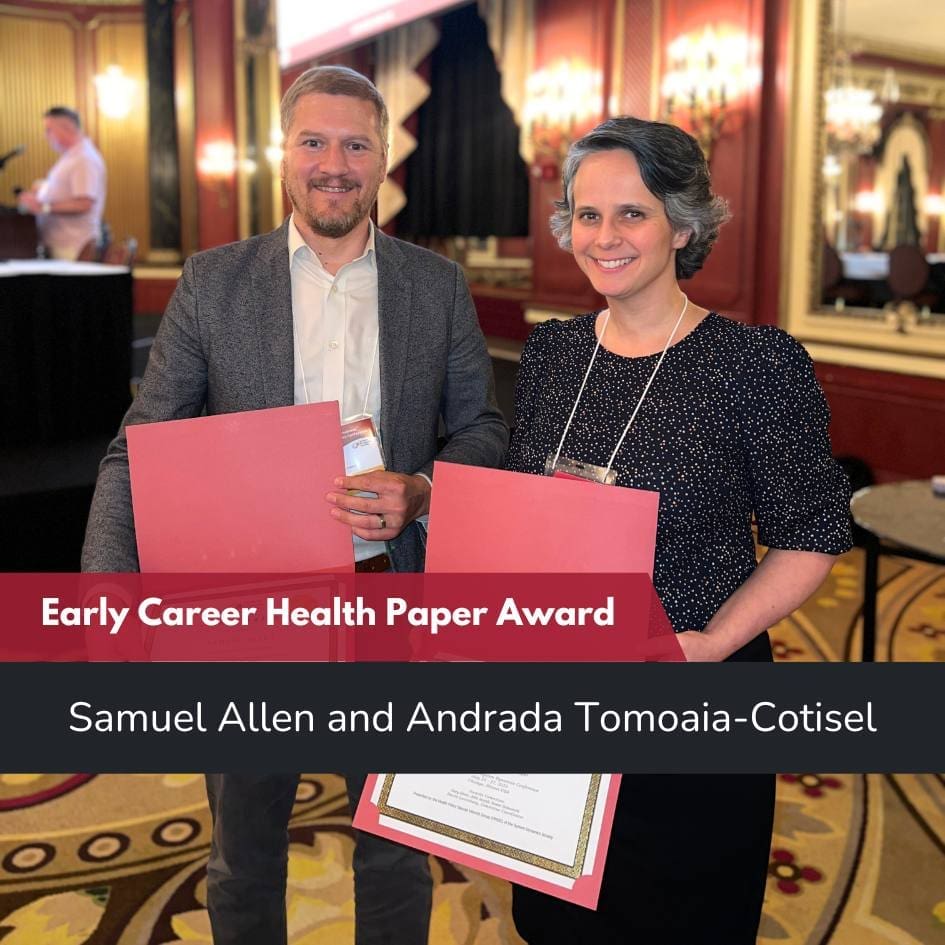
Honorable Mentions
The honorable mentions spotlight commendable efforts and innovative approaches that greatly contribute to the field. Their work exemplifies dedication, and innovation, and showcases potential future leaders in the domain.
Zeynep Hasgul and Alireza Akhavan – Dana Meadows Award and Health Award
Health-related Quality of Life of Patients Receiving Immunotherapy: Modeling Analysis (Q-PRIMA Study)
Rachel Thompson – Dana Meadows Award
A qualitative system dynamics model of overdose bystander behavior in the context of Connecticut’s Good Samaritan Laws
Nabeela Mumtaz – Health Award
Estimates of the Reproduction Number for Seasonal Influenza Infectious Disease in the European Region from 2012 to 2016
Zahra Shams Esfandabadi – Dana Meadows Award
The Future of Carsharing Services and its Role in Sustainable Transportation
Barry Richmond Scholarship Award
Established in 2007 by isee systems to honor and continue the legacy of its founder, Barry Richmond. It is presented to a deserving Systems Thinking/System Dynamics practitioner whose work demonstrates a desire to expand the field or to apply it to current social issues.
Winners: Junlai Zhang
Paper: Using System Dynamics modeling to forecast China’s population until 2060 to visualize the aging and shrinking population trends
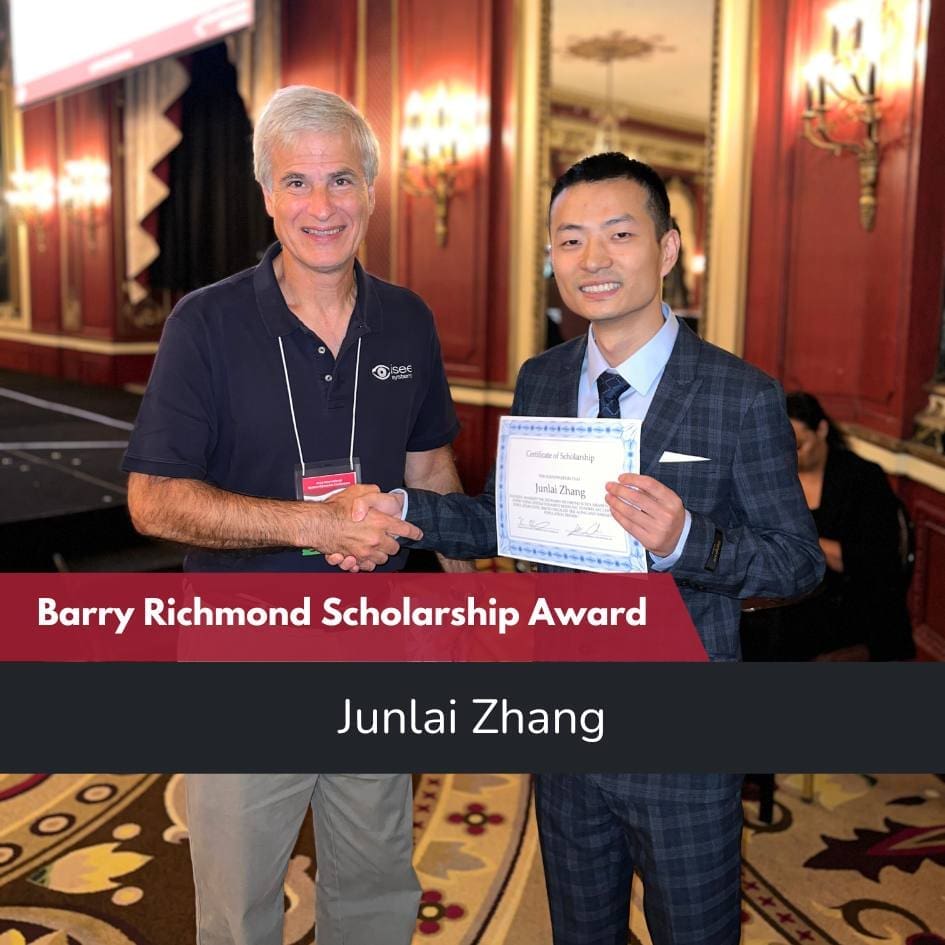
Recent Posts
Society Governance Updates
New System Dynamics Society leadership
Call for Presenters: Seminar Series
Share your insights in the System Dynamics Society Seminar Series. Submit your proposal and join a global community of experts
Honoring Excellence: A Glimpse into the Awards of the International System Dynamics Conference
Dive into the prestigious awards and honorable mentions of the International System Dynamics Conference, celebrating trailblazers and emerging talents in the field
Upcoming Events

2024 International System Dynamics Conference
The International System Dynamics Conference is coming to Bergen! Save the date: August 4-8, 2024. We hope to see you there! #ISDC2024
Recent Business cases
System Dynamics Helps Evaluate Anticipatory Action on Cholera Outbreaks
Humanitarian agencies encourage anticipatory action in disaster response to cholera outbreaks in the Democratic Republic of Congo.
Management Design for Planted Forests in Japan Using System Dynamics
Hanno City in Saitama Prefecture used a system dynamics model to enable detailed analysis of labor requirements and changes in forest conditions.
Solving Bottlenecks in Dairy Production Facilities with System Dynamics
FriedslandCampina employed system dynamics to strategically enhance production efficiency in the midst of factory merging.
Join us
From Bergen to Global: UiB’s System Dynamics Group
From Bergen to Global: UiB’s System Dynamics Group
The System Dynamics Group, an autonomous research group at the University of Bergen (UiB) was established in 1971 by professor emeritus Svein Nordbotten. Inspired by the work of Jay W. Forrester, Nordbotten taught a course called Cybernetics and System Dynamics at UiB and collaborated with other scientists at the Christian Michelsen Institute. That motivated several graduate students to write theses using the SD methodology. Years later, a former student (and now professor emeritus), Pål Davidsen went to MIT as a Visiting Scholar and worked with Forrester and other prominent system dynamicists on several projects. Not long after returning to Bergen, Davidsen was asked by the university president to establish an international Master’s and Ph.D. program in System Dynamics, and the first students enrolled in the fall semester of 1995.
The System Dynamics Group at UiB has since grown into the European hub for System Dynamics, hosting several visiting scholars and Ph.D. students each year. The group, chaired by Professor Birgit Kopainsky, is presently made up of three faculty members, several doctoral and postdoctoral researchers, research assistants, and a sizeable cohort of master’s students. Specializing in System Dynamics modeling, the group is involved in numerous research projects related to sustainability and climate change adaption, common pool resource management, socioecological development and justice, and public health policy analysis.
Master’s in System Dynamics
The System Dynamics Group offers a two-year master’s degree program. It is the most extensive master’s program in the world for System Dynamics and is taught entirely in English. Over the two years, students are provided with the tools and knowledge required to become competent system dynamicists. With an emphasis on quantitative simulation modeling, our courses are designed to train students to diagnose dynamic social problems, build explanatory system dynamics models, derive dynamics of the system by way of simulation, and analyze the system’s performance for policy development. This program focuses on System Dynamics methodology, which is domain agnostic, allowing students from virtually any disciplinary background to be admitted. The master’s program is tuition-free for Norwegian and EU students. As of 2023, non-EU students have to pay tuition fees to the University.
Additionally, we jointly founded the European Master Program in System Dynamics (EMSD) in 2010 with Radboud University in the Netherlands, the University of Palermo in Italy, and the New University of Lisbon in Portugal. EMSD students begin their studies in Bergen with us, where they are introduced to quantitative modelling in the first semester. In the second and third semesters, they move on to partner universities. They have the option to return to Bergen to write their theses in the final semester. Students pay tuition fees to each university they are enrolled in.
The System Dynamics Group at UiB has been a proud sponsor of the System Dynamics Society and the International System Dynamics Conference (ISDC) over the years. We have been program chairs several times, the organizing chair for ISDC 2000 and 2020 and we will organize the next ISDC 2024 in Bergen.
Each year, a sizeable number of our students and faculty participate and present their work at the conference. High-quality work from our staff and Master’s students has been recognized by the System Dynamics Society with numerous awards. Most recently, Pei Shan Loo was awarded the Lupina Young Researchers Award and Ismay Bax received Honorable Mention for the Dana Meadows Award in ISDC 2022. Our students have also been selected as Plenary Speakers for the Student-Organized Colloquium for their outstanding work: Mahla Rashidan (2021 & 2022), Ismay Bax (2022), and Anna Siemer (2023). Congratulations to our students! We are committed to continue nurturing future talent within the System Dynamics community.
Contact Us
Website: uib.no/rg/dynamics
Email: advise.sysdyn@uib.no
Follow us on LinkedIn!
Recent Posts
Society Governance Updates
New System Dynamics Society leadership
Call for Presenters: Seminar Series
Share your insights in the System Dynamics Society Seminar Series. Submit your proposal and join a global community of experts
Honoring Excellence: A Glimpse into the Awards of the International System Dynamics Conference
Dive into the prestigious awards and honorable mentions of the International System Dynamics Conference, celebrating trailblazers and emerging talents in the field
Upcoming Events

2024 International System Dynamics Conference
The International System Dynamics Conference is coming to Bergen! Save the date: August 4-8, 2024. We hope to see you there! #ISDC2024
Recent Business cases
System Dynamics Helps Evaluate Anticipatory Action on Cholera Outbreaks
Humanitarian agencies encourage anticipatory action in disaster response to cholera outbreaks in the Democratic Republic of Congo.
Management Design for Planted Forests in Japan Using System Dynamics
Hanno City in Saitama Prefecture used a system dynamics model to enable detailed analysis of labor requirements and changes in forest conditions.
Solving Bottlenecks in Dairy Production Facilities with System Dynamics
FriedslandCampina employed system dynamics to strategically enhance production efficiency in the midst of factory merging.
Join us
Consideo’s Insight into the Global Energy Transition: A Systems Perspective
Consideo’s Insight into the Global Energy Transition: A Systems Perspective
Complexities of Energy Transition
The global energy transition is a complex challenge. The development of technology, the need for resources, the depletion of high-grade materials and their cost implications, the variances of weather, the different strategies varying the degree of electrification vs. the use of (imported) synthetic fuels, the need for capacities related to the path of transition and the added need with a time delay for repowering of older installations, the developments of demands, etc., all contributes to a bandwidth of possible scenarios including some fatal system archetypes.
Our Simulation Model and Its Reception
A couple of years ago, Consideo developed, in a larger consortium, a simulation model on the global energy transition using data e.g. from the International Energy Agency and its World Energy Outlook. While the implications for the need for materials were well received by the environmental agency of Germany, the notion that we need underutilized capacities for electrolysis (and for repowering) that will not be realized by market forces alone, back then wasn’t.
The Potential of Renewable Energy
It is a simple thing to understand that renewable energy is best utilized by direct electrical use. And since we have those periods without wind or sunshine, we should rely on a grid connecting sunny and windy areas, and on re-electrification from hydrogen that we can produce from surpluses of energy production when the wind and sunshine are there.
The Debate Over Hydrogen and Electrification
While the production of hydrogen implies losses of efficiency, many people nevertheless argue that hydrogen and synthetic fuels (they have no idea where all the carbon for that should come from) would be easier than the widespread electrification of sectors like transportation, housing, or industry. So, from a global perspective, we need a maximum of electrification, leaving the hydrogen for industrial processes, the chemical industry, ammonia for ship transportation, and re-electrification. Nevertheless, some countries don’t want wind energy in their backyards and argue for the import of hydrogen and the use of synthetic fuels. That’s a “shifting the burden to the intervenor” archetype.
Germany’s New Energy Strategy
But now the German government plans for new gas power plants that in the future can re-electrify hydrogen. Additionally, they argue that those underutilized capacities need to be subsidized. Against this logical concept, two kinds of counterarguments are out: first, the argument, that we need no gas power plants or use of hydrogen but more renewables; and second, that we should import energy from France’s nuclear power plants and not become independent using our surpluses of renewable energy. Well, both counterarguments are wrong.
Here is a grey paper featuring the model: The ToC and the Global Energy Transition
Blog Author: Kai Neumann, neumann@consideo.com
About Consideo
Consideo is a recognized leader in the field of systems thinking and modeling. As a sponsor of the 2023 System Dynamics Society, they have showcased their dedication to promoting understanding and education in System Dynamics. Led by Kai Neumann, Consideo offers a range of tools and solutions designed to help individuals and organizations visualize and manage complex systems, facilitating informed decision-making processes. Drawing from their wealth of experience and expertise, their products, such as the renowned IMODELER, are a testament to their commitment to excellence in systems thinking. Learn more about their innovative solutions at Consideo’s website
Recent Posts
Society Governance Updates
New System Dynamics Society leadership
Call for Presenters: Seminar Series
Share your insights in the System Dynamics Society Seminar Series. Submit your proposal and join a global community of experts
Honoring Excellence: A Glimpse into the Awards of the International System Dynamics Conference
Dive into the prestigious awards and honorable mentions of the International System Dynamics Conference, celebrating trailblazers and emerging talents in the field
Upcoming Events

2024 International System Dynamics Conference
The International System Dynamics Conference is coming to Bergen! Save the date: August 4-8, 2024. We hope to see you there! #ISDC2024
Recent Business cases
System Dynamics Helps Evaluate Anticipatory Action on Cholera Outbreaks
Humanitarian agencies encourage anticipatory action in disaster response to cholera outbreaks in the Democratic Republic of Congo.
Management Design for Planted Forests in Japan Using System Dynamics
Hanno City in Saitama Prefecture used a system dynamics model to enable detailed analysis of labor requirements and changes in forest conditions.
Solving Bottlenecks in Dairy Production Facilities with System Dynamics
FriedslandCampina employed system dynamics to strategically enhance production efficiency in the midst of factory merging.



